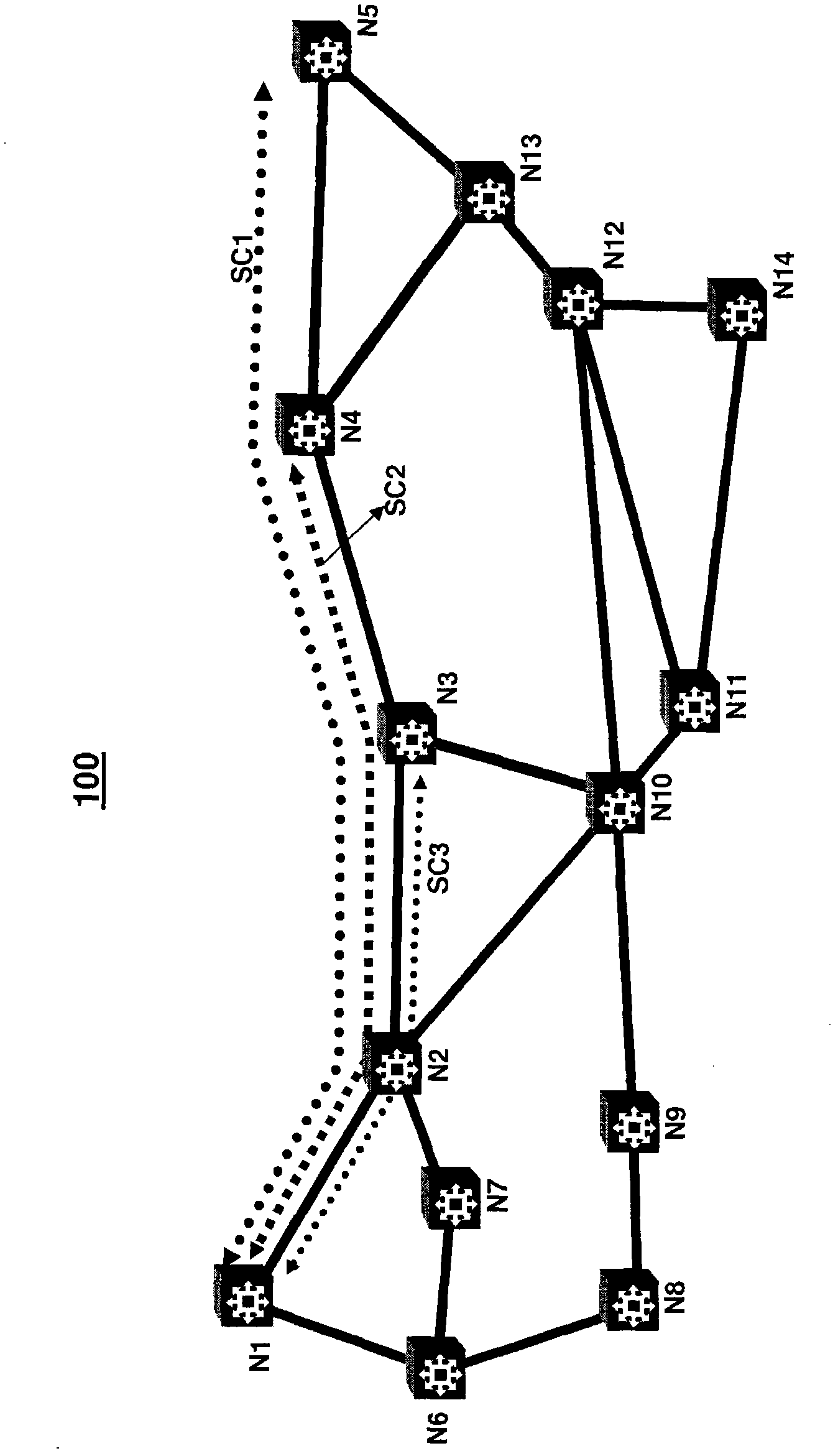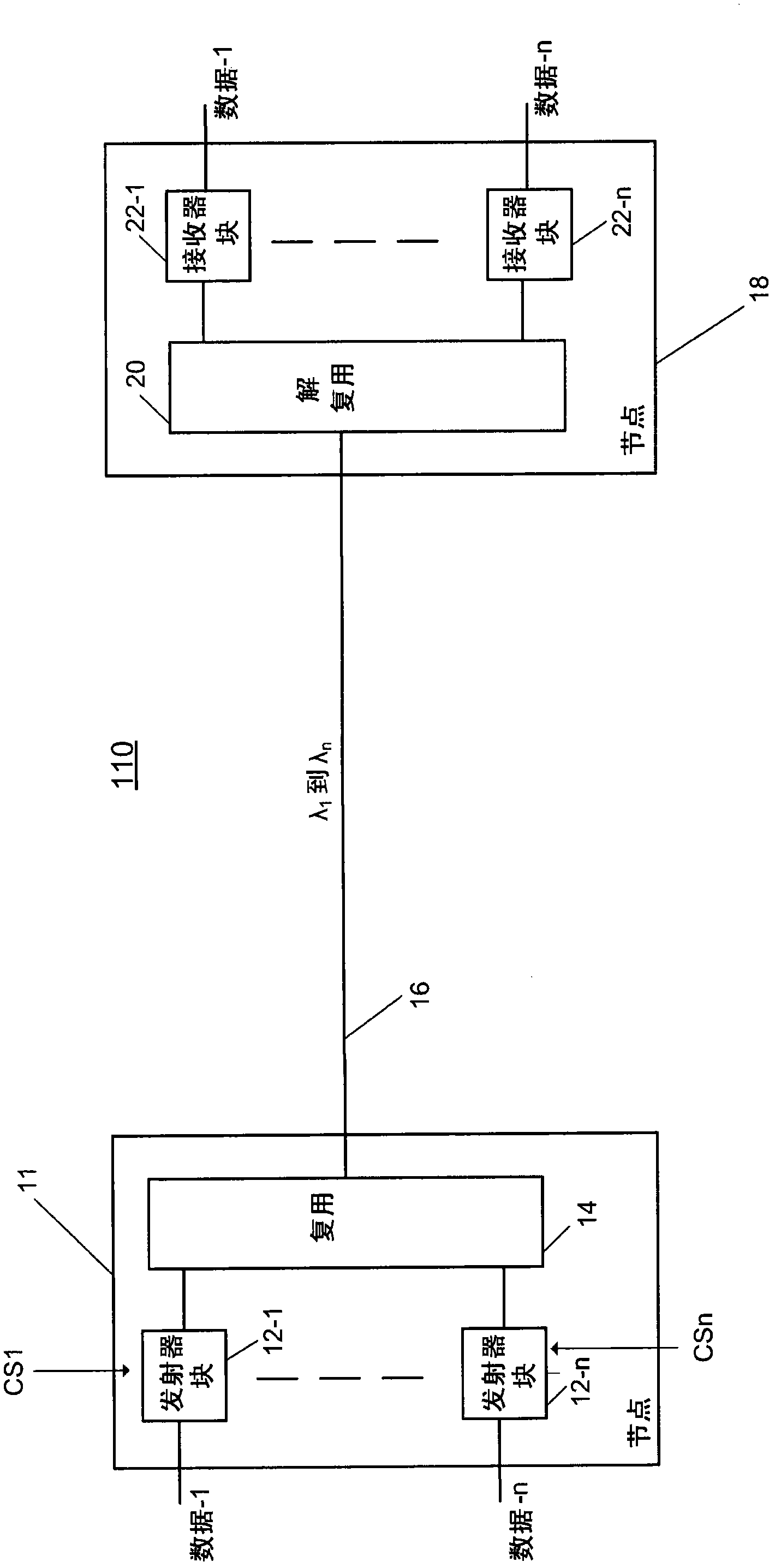Multiplexer and modulation arrangements for multi-carrier optical modems
一种激光器、调制格式的技术,应用在多路复用系统的选择装置、多路复用通信、波分复用系统等方向
- Summary
- Abstract
- Description
- Claims
- Application Information
AI Technical Summary
Problems solved by technology
Method used
Image
Examples
Embodiment Construction
[0023] In accordance with the present disclosure, data in digital form is received by a transmitting node of an optical communication system and converted to an analog signal by a digital-to-analog converter (DAC) to drive a modulator. In turn, the modulator modulates light at one of a plurality of closely spaced wavelengths according to the received data and the specified modulation format. Use multiplexers or combiners to group multiple closely spaced wavelengths or carriers together, for example, to form a superchannel. Then, multiple superchannels are multiplexed and sent to the receiving node through the optical communication path. At the receiving node, the multiplexed superchannels are demultiplexed by an optical demultiplexer and provided to a plurality of corresponding demodulators. Each carrier is then provided with a baseband optical signal by combining with light from multiple local oscillators tuned to each of the closely spaced wavelengths. The demultiplexed sup...
PUM
 Login to View More
Login to View More Abstract
Description
Claims
Application Information
 Login to View More
Login to View More - R&D Engineer
- R&D Manager
- IP Professional
- Industry Leading Data Capabilities
- Powerful AI technology
- Patent DNA Extraction
Browse by: Latest US Patents, China's latest patents, Technical Efficacy Thesaurus, Application Domain, Technology Topic, Popular Technical Reports.
© 2024 PatSnap. All rights reserved.Legal|Privacy policy|Modern Slavery Act Transparency Statement|Sitemap|About US| Contact US: help@patsnap.com










